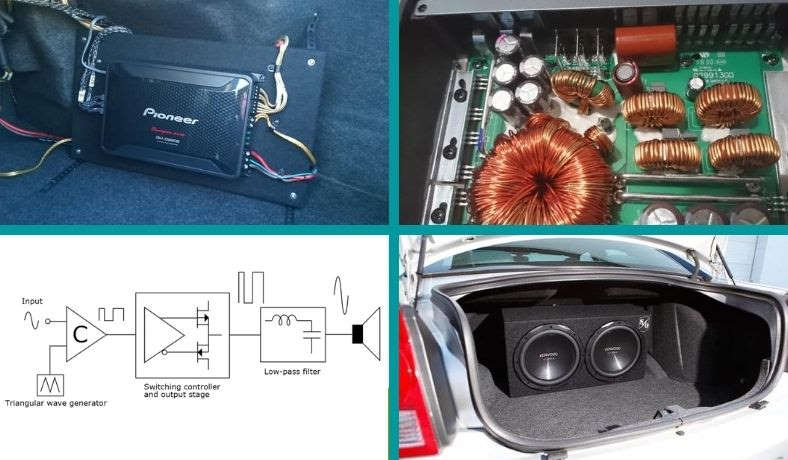There’s a big range of car amplifiers out there and at first glance, they nearly all look the same. However, there are some big differences (and great benefits) you should know more about.
Thanks to modern technology, class D car amps can be one of the best choices for your money. But what is a class D car amplifier? How do they compare to others, and why does it matter?
Read on and I’ll show you!
Contents
Infographic – Class D car amp facts
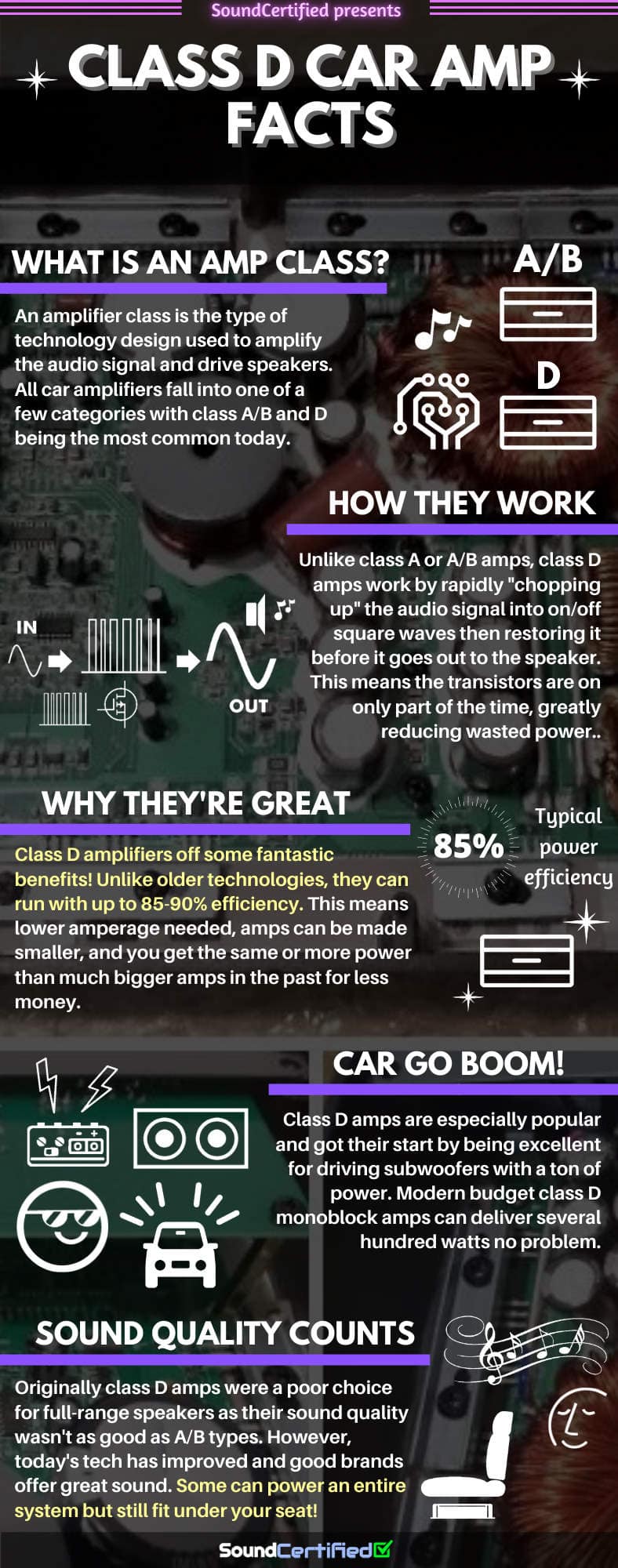
What is a class D car amplifier?
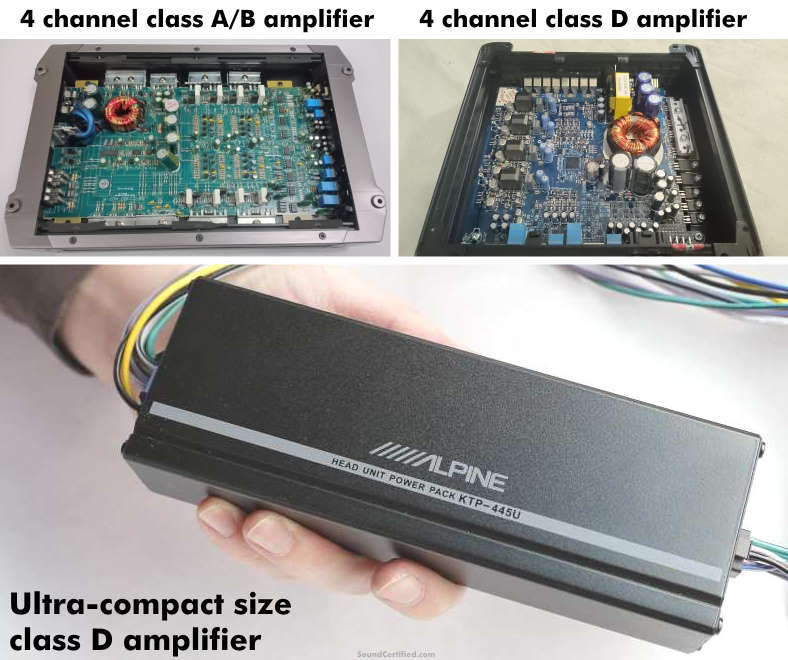
You often can’t tell a class D amp apart from a regular class A/B car amp just by looking. That’s because they do the same thing, have the same features, and the main difference – how they work – is hidden inside. Some though are much smaller than other types of amps so they differ in size vs another amp with the same power rating.
Class D car amplifiers are audio power amplifiers that use a more efficient amplifier based on pulse width modulation (PWM) technology.
Unlike some misleading or misunderstood descriptions, class D amplifiers are not “digital amps.” Instead, they still work with analog (non-digital) signals although they use a different approach.
In the past due to the limitations of technology and sound quality at the time they were used only for powering subwoofers since the lower sound quality they offered wasn’t noticeable in the low frequency range of bass in music.
The good news is that car audio technology & electronics have improved a lot. You can now find a wide variety of class D amps to drive full-range speakers, subwoofers, or both – all from one small amp!
The benefits of class D amplifiers
These types of amps have become more and more popular because of the benefits they offer:
- High efficiency: Class D amps typically have about 85% efficiency as they work, meaning they use a lot less electrical current than class A/B and other amps. This also means you can often use a smaller gauge for power wiring which saves money.
- Compact size: Since they waste less power, they don’t run hot like other amps and can be made smaller in size than traditional car amplifiers. This also saves money by reducing the metal needed for the amp’s chassis.
- More power for your money: They’re capable of delivering more power since the power limitations of other amps make this harder. Class D amps can provide a lot more power for the same money as very expensive amps of the past. Since heat is not a problem, they can deliver power (watts RMS, not “peak power”) without the side effects.
- More installation options: Obviously, a smaller amp can fit in more places. However, since they don’t generate much heat, that means you don’t have a risk of them overheating like other kinds. You can fit a class D amp in places with no or very little airflow or space: under seats, inside motorcycle storage containers, and even inside a dashboard near the head unit.
Since they draw less electrical current (amps) than older models, some can be installed using the factory radio wiring. This means you’ll avoid the need to buy & install extra wiring as you’d normally have to. Nice!
What does car amplifier class mean?
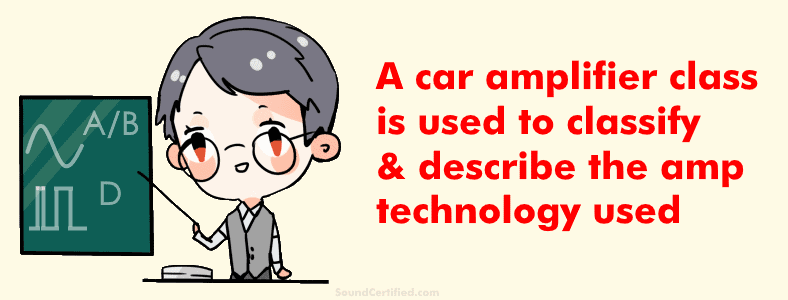
An amplifiers class is a name used to categorize an amplifier by the technology used for the operation of an amp. All audio amplifiers fall into one of a few classes.
Amplifier classes have been around for decades with the number of classes increasing as technology has improved.
In addition to D, here’s a list of others:
- Class A: The most inefficient but highest-fidelity amplifier type. Not that popular and is usually reserved for audiophile use.
- Class B: Not very common – an older amp class where amplification splits up the positive and negative halves of the audio signal. More efficient than class A amps but lower sound quality as a result of the way it works. These were used in some vacuum tube amps years are go but are outdated now.
- Class A/B: For many years, the most popular because they’re a good all-around compromise between low cost, sound quality, and efficiency. These types of amps combine the way class A & class B designs work. However, their power efficiency is somewhere around 50-65% so they still waste a fair amount of power.
How does a class D car amp work?
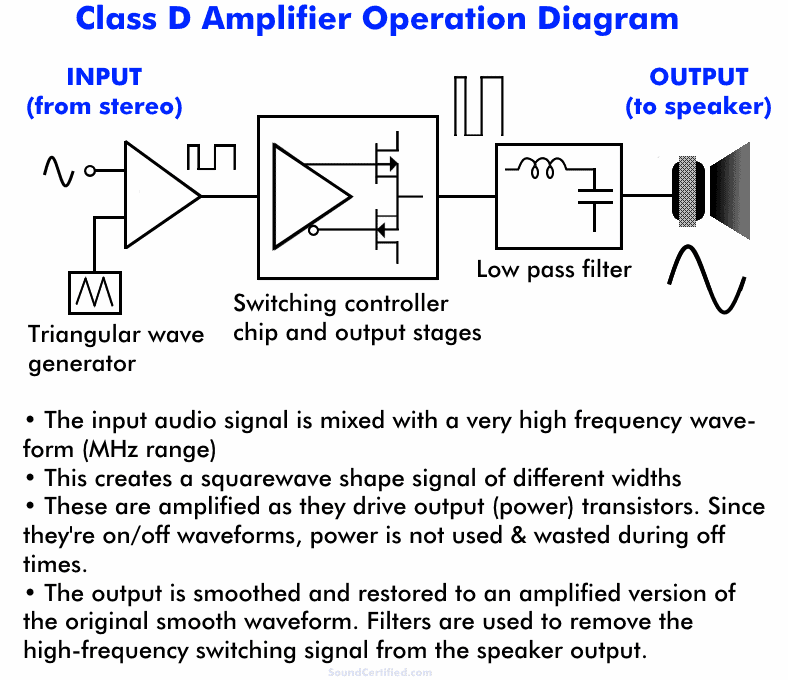
Diagram showing how a class D amplifier works. Unlike other designs, this one uses a very high-frequency switching frequency circuit to mix the incoming signal with a waveform to create an on/off series of pulse width modulation (PWM) signals. This is then used to drive power transistors where it’s amplified. The amplified result is then “smoothed” to recreate the original musical signal and filtered to remove high-frequency noise added as it works.
As I mentioned earlier, class D amplifiers are not digital amplifiers as they’re sometimes called for some reason. They don’t convert a stereo’s musical signal into a digital series of numbers; rather, they use an analog square wave design based on pulse width modulation (PWM) technology.
Here’s how a class D car amp works:
- The low-level input signal from the head unit is modulated, or altered, by a high-frequency circuit that changes the audio signal into a series of square on/off signals that vary in width based on the input level.
- These signals are then used to drive power transistors which amplify them. The square wave signals are amplified to a higher voltage from the amp’s switching power supply and are now capable of delivering high power to speakers. Because the square waves turn on and off rapidly, the transistors never stay switched on for long reducing the power used and wasted.
- The amplified square waves are smoothed by electronic circuits that change them back into an amplified version of the original curved musical signal.
- Before the speaker output terminals, filters remove high-frequency noise from the output signal as the amp works to eliminate it from the range of sound you can hear. The output is an amplified version of the input signal with a high power capacity.
Nearly all class D amplifiers (unlike class A or A/B models) use a special integrated circuit (IC) that handles chopping up the audio signal and driving power transistors. Some miniature versions are designed to be an “all in one” product and drive the speakers directly. These are usually used for lower-power computer speakers or miniature home stereo amps.
Budget car amps often use an off-the-shelf class D amp controller chip while brand names more often use a more advanced custom IC.
Just like other amps, many also offer high level inputs to work with factory stereo units.
Are Class D amplifiers high fidelity?
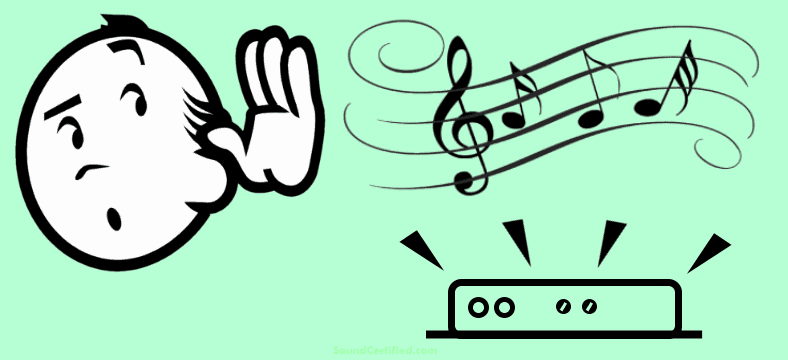
In the strictest sense, no, these types of amps are not high fidelity unlike class A amps with super-low distortion specs or the sound quality of high-end class A/B designs. That’s because the sound fidelity of class D amps must be compromised a bit in order for us to benefit from the efficiency they offer.
In order to provide world-class sound clarity, Class A amps waste a lot of power which is turned into heat. However, they’re still preferred by some people because they offer no-compromise audio amplification, ultra-low distortion, and reproduce the musical signal very faithfully.
High-end class AB amps, while not quite as good as class A, also offer excellent sound quality at the added expense of a higher price tag. Even budget and mid-level class A/B amps can offer high-fidelity sound if they’re properly designed because of how the technology works.
Because class A/B amps offer good sound quality in addition to decent efficiency and are cheap to build, they’ve been the most common type of car amplifier for years. Despite that, class D amps have improved and are becoming more popular.
Here’s why class D amps are lower fidelity:
- Class D amps use PWM technology to convert the original signal into square waves and back again. This means a small amount of fidelity can be lost. Any time a musical signal is converted some accuracy is lost.
- As they work, more noise is unintentionally added to the sound signal than other kinds of amps. Because of this, these amps often have a lower signal-to-noise (SNR) ratio than their counterparts. Generally speaking the higher the SNR, the better.
Don’t let that give you the wrong impression, though – today’s amps are very good!
They’ve improved a lot – but quality matters!
5 to 10 years ago, the class D amps I tried were disappointing. The good news is that today’s amps are much better. As long as you shop carefully and pay attention to the details, you’ll be happy with the sound.
For example, the Alpine MRV-F300 4 channel class D amplifier I reviewed here is a great-sounding little amp that I enjoyed.
Most people will find it nearly impossible to tell the difference in sound quality when comparing a very good class D amp to an average A/B amp. Unless you’re extremely picky about sound quality, it shouldn’t be a problem.
If you’re only planning to use an amp for bass the sound quality doesn’t really matter since we can’t hear the difference for bass frequencies. That’s why they were used only for subwoofer amp before the technology improved.
What is a class D mono car amplifier?
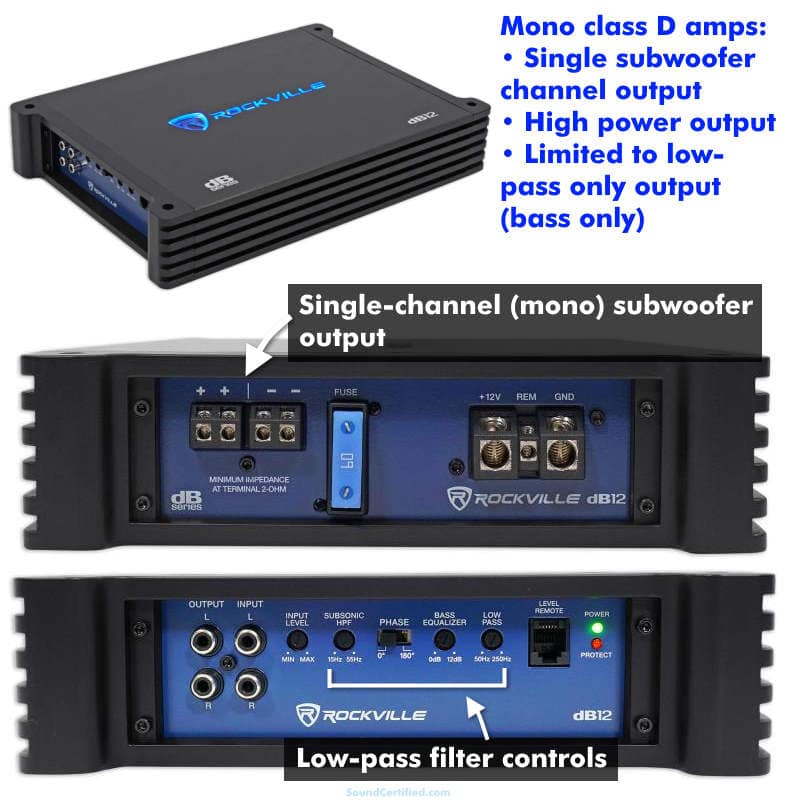
Class D mono car amplifiers are designed to deliver a lot of power to subwoofers for high-volume bass that really slams. Unlike full-range amplifiers, they’re limited to only producing bass.
Most mono car amplifiers have some common features:
- Lower speaker impedance (Ohms) rating: Many can handle down to 2 ohms or even 1 ohm for maximum power delivery.
- Not full-range capable. Most can’t be used for coaxial or component speakers, for example. The audio they can produce is limited to only a low-end bass range.
- High power output: These days, class D mono car amps have power ratings such as 500W RMS, 750W RMS, and even 1,000 watts or more! This is made possible by class D efficiency.
- Subwoofer level control: some models provide a rotary knob to adjust the amp’s volume from your dashboard.
- Adjustable bass filter: Typically, even though they can’t produce sound above 250Hz or so, you can adjust the crossover output cutoff from 20 to 250Hz, depending on the particular amp.
While they use a single monoaural (mono) channel output, some have an extra set of speaker terminals to make it easier to connect multiple subs if you like.
Are Class D amps good for subs?
Most importantly the thing to understand is that these mono amps (also called “monoblock” amps) are designed only to deliver a lot of high power to the subwoofer and nothing more. In this regards, they’re excellent for subs!
They offer a higher watts-per-dollar value than any other kind of amplifier. In fact, you can find some today that can deliver 500 watts RMS (or higher!) for $100 and below.
Is a class D amplifier better?
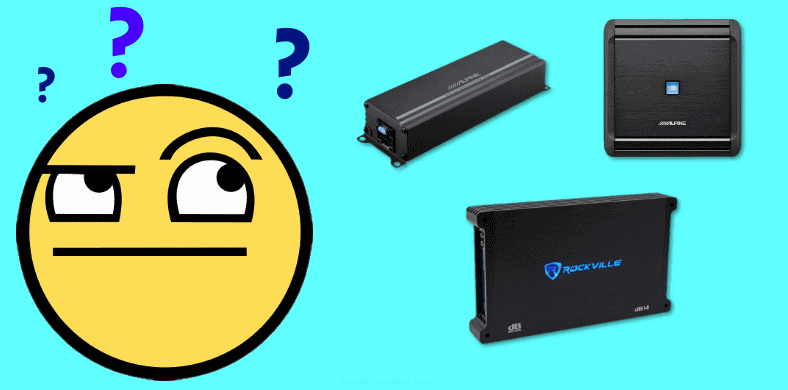
There’s not a true “best” amplifier class – at least not currently. Each one has strengths and weaknesses, meaning it comes down to what’s best for you. For example, if you’re like most people and want good sound but the best value for your money, then yes, it’s likely better in that case.
However, when it comes down to what matters for most people, class D car amps are better in most but not all categories that count.
Here’s a comparison of the different amplifier classes and their pros and cons:
Car amp class comparison diagram
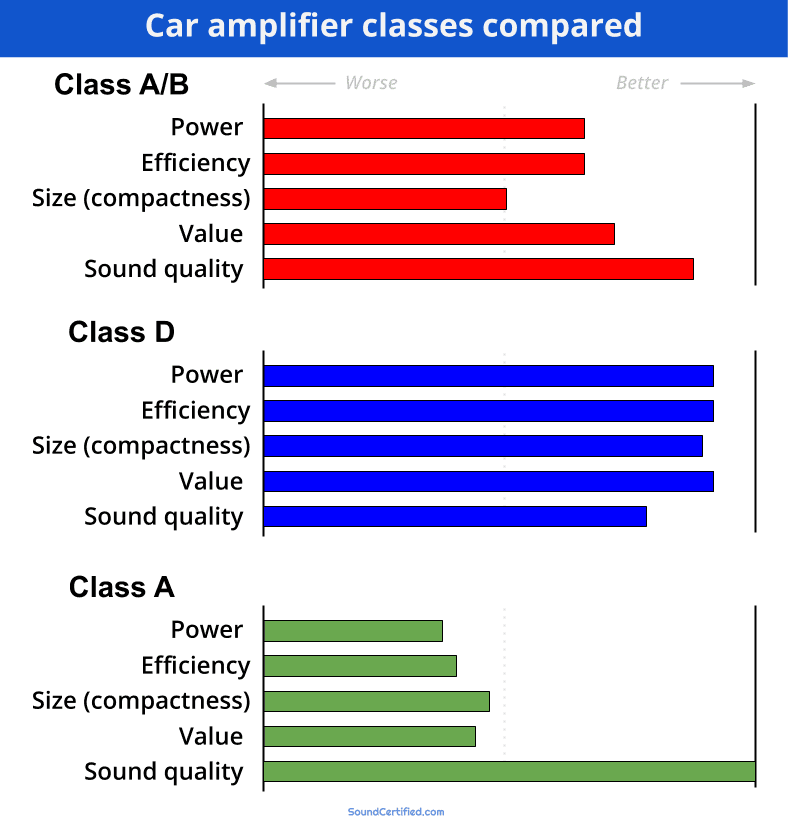
A diagram comparing the main things you care about with audio amps. As I mentioned earlier, class A/B amps are a good compromise between sound quality, cost, and power. However, as you can see here, class D amps these days now are a better value and offer more for the money. They’re a better all-around choice for most people who don’t need audiophile-level sound quality.
Like I mentioned before, class D amps now are becoming more and more popular along with being a better value for most people. Unless you’re after the best possible sound quality you can buy, you’ll get more power for your dollar, an affordable price, and easier installation for your money.
As you can see in my diagram above, class A amps excel in sound quality (they’re ultra-low in distortion and do a great job of reproducing the musical signal) but fall short in nearly all other areas.
A/B class amps were for many years the best all-around choice. They offer very good sound quality even with budget models, fair power availability, they’re affordable, but they’re not as compact. Class A amplifiers aren’t commonly available for car audio much anymore so they’re not really a competitor.
Class D amplifiers as you can see have more pros than they do cons – they’re smaller, you can get more power for the money, and they use less electrical current, but aren’t audiophile-level in their sound quality. When shopping you can find 4 x 100 watts RMS power model vs a 4 x 50 watts RMS power A/B amp, for example.
Ultimately, for most people class D amps are great and the best choice if you’re not very picky about sound quality. Don’t get me wrong – today’s models have very good sound quality – just not high-end, audiophile-level sound. If that’s not what you’re after you’ll find them very enjoyable.
Class D vs class A/B car amplifiers
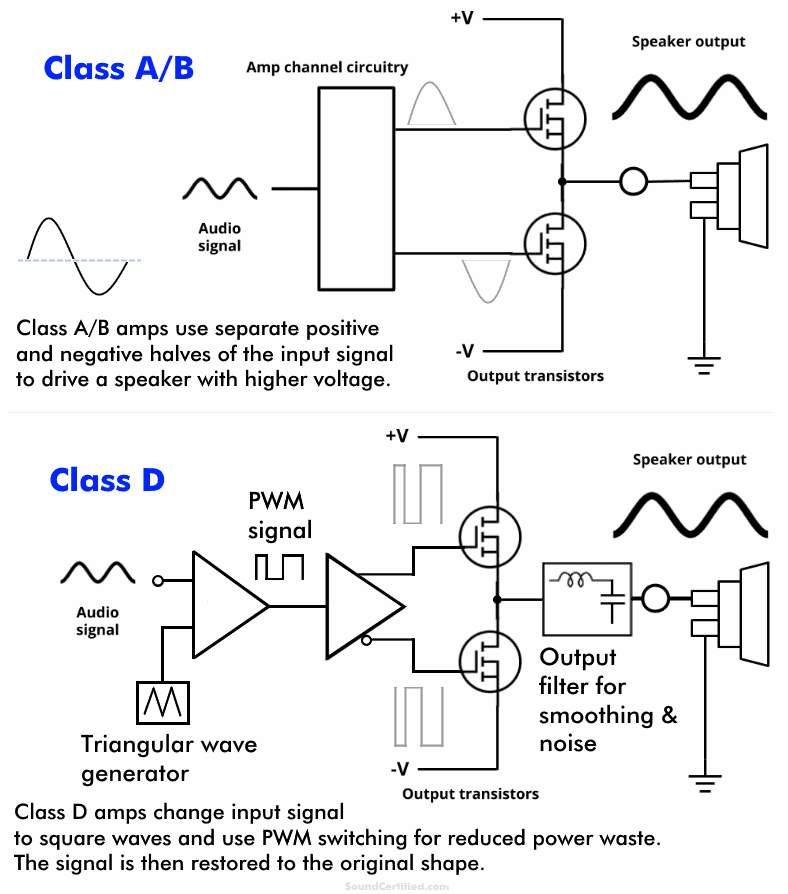
A diagram comparing the operation of class A/B vs class D amps. Unlike class D amps, A/B models don’t change the original signal but instead, amplify it and split it into a positive and negative half to drive output stages. Class D amps take advantage of PWM principles and only drive them part of the time, reducing power use.
What is a class AB car amplifier?
Class A/B amps have been around for decades and range in price from both super-budget levels to high-end designs. In all cases the basic design used is the same: the input signal is used to drive output transistors with a positive and a negative half, boosting the input using the amp’s internal power supply voltage to drive speakers.
Due to how they work, some power is wasted (around 45-35% or so, depending) and ends up as heat that warms the heatsink (heavy metal chassis). They offer very good sound quality as they don’t change the audio signals but instead only amplify them.
Class D circuitry uses PWM principles to save power wasted as they only switch the power output transistors part of the time. Unlike class A/B amps, they do change the input signal: it’s converted to square waves that are converted back to smooth waves just like the input signal as they leave the amplifier.
Are Class D amps better than AB?
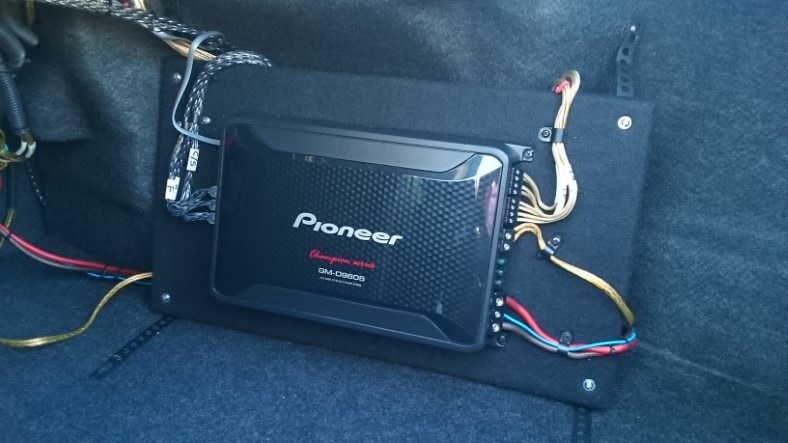
Class D amps can offer more power and/or more amp channels in the same or smaller size than class A/B. This Pioneer 5 channel amp, for example, can deliver more power to 4 speakers and a dedicated subwoofer channel than A/B amps of the same size. For that reason, you could say it’s better.
There’s a slight difference in sound quality that varies by brand and the quality of the design. As a compromise, the signal-to-noise ratio is somewhat worse than A/B designs. For example, 90dB or so is more typical for good ones while A/B amps often start at 90dB and 100dB isn’t uncommon.
It’s not really the case that class D amps are better than A/B but to most people they are. For example, not that many people care about finer sound quality specifications like noise or SNR.
They care more about the power they’ll get for their money – in this regard, D class amps are better. They’re also easier to install in many cases since they’re smaller.
I think the best response is to say they’re better for power, size, and value than most A/B amps. They’re not better for higher-end sound quality. There are, however, some class D amps with excellent sound quality.
You’ll have to spend more for those as they’re more advanced designs in order to produce a higher level of sound quality than most.
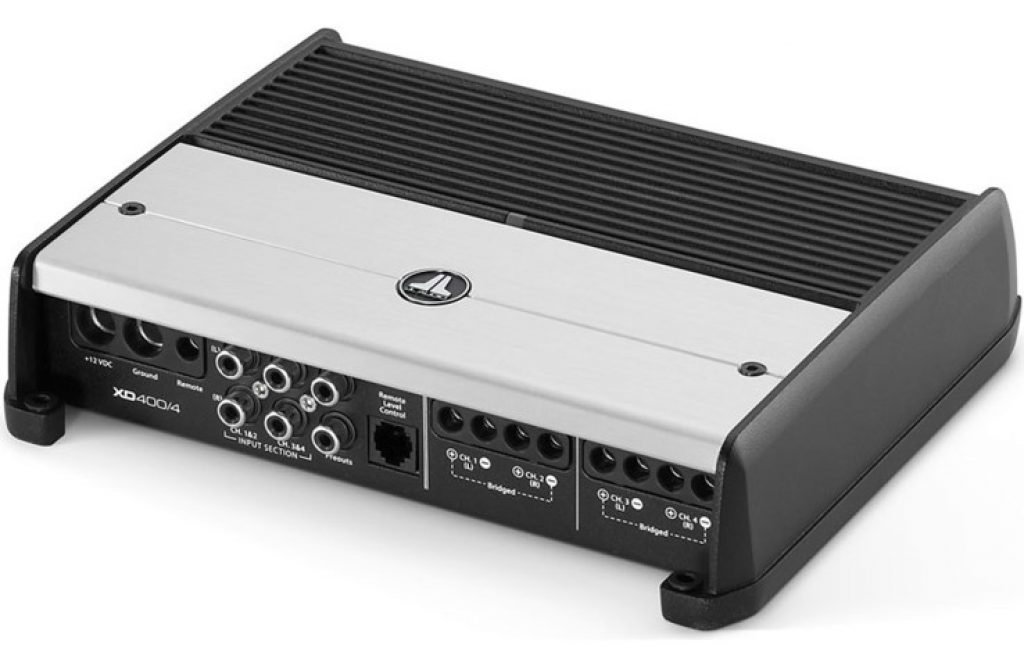
Some class D amps like this one from JL Audio offer excellent sound quality that can compete with most A/B amps. They’re more expensive, though.
Can I use a marine class D amplifier in a car?
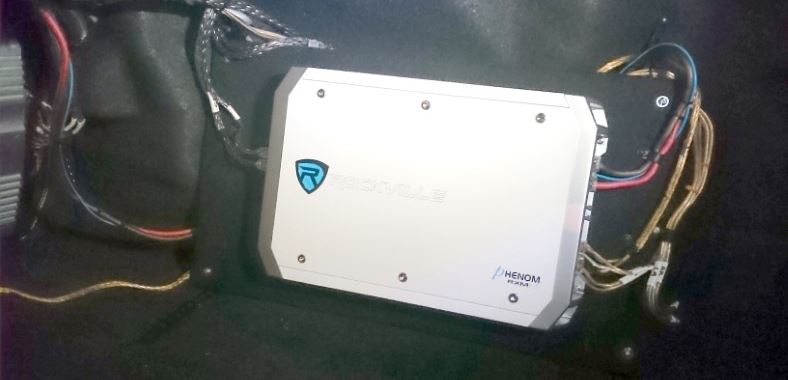
A marine amp installed for in-vehicle use & testing. Don’t hesitate to use a class D amp yourself if you like!
As a matter of fact, they offer some great installation options you might not have otherwise!
Here’s a list of some great options possible and problems they solve:
- Class D marine mini-amps are excellent for reliable power and great sound in motorcycles since they can fit in smaller spaces and won’t overheat.
- A marine amp is suitable for outdoor vehicles and is far more affordable than specialty amps from the vehicle manufacturer.
- You can build a sound system without a stereo! Some class D marine amps have a built-in Bluetooth receiver & controller option that makes this possible.
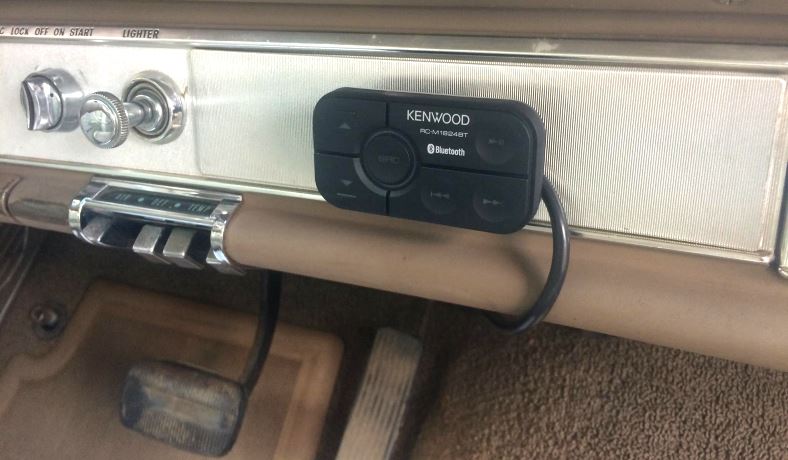
Marine amps offer some excellent solutions for some special case installations like in classic cars. Rather than spend a ton of money for custom fabrication or metalwork you can use an amp for a direct, easy-to-install sound that works great.
There really aren’t any “cons” to worry about, aside from the cosmetic color and style. Additionally, when shopping that means it’s possible to have even more options and you can possibly find a great deal.
